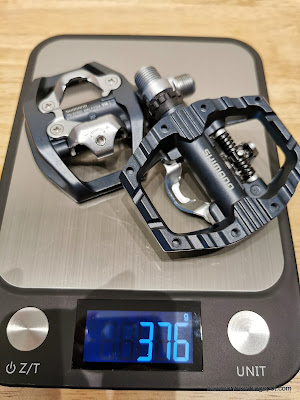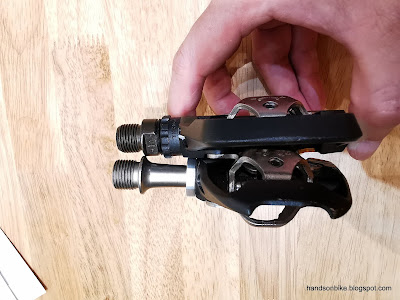PRO Stealth saddles come in many different versions. Just the
road type comes in 3 to 5 different versions, which can be quite confusing. The differences are mainly the shell material and saddle rail material, as the saddle shape is generally the same. These differences affect the weight and thus the price, but I believe the saddle feel should be similar.
Although both are PRO Stealth saddles, the Superlight and Off-road versions have quite a lot of differences. Let's check it out in detail below.
PRO Stealth Superlight road saddle
Large cutouts in the middle, with a smooth top layer.
PRO Stealth off-road saddle
Center cutouts does not go through, while the top layer has a rougher texture.
Generally the same shape, with different cutout designs.
Difference in graphics can be seen here. Both are subtle black/grey designs which I prefer.
Texture difference can be seen here. The road version has a smooth surface, while the off-road version is matte with a rough grain.
Road saddle width is 145 mm, a bit wider than the 142 mm spec.
Off-road saddle width is spot on at 142 mm.
Road saddle length is 250 mm.
Off-road saddle is shorter at 240 mm.
Completely different saddle rail construction, as the road version uses a one-piece molded type with the shell.
Carbon rails integrated directly into the shell.
Both have the accessory mounting holes under the saddle.
Carbon rails are 7x9 mm oval shaped, while the stainless steel rails are a ciruclar 7 mm in diameter. Recommended adjustment range is the same.
Top shape is the same, with a slight upward curve at the rear.
Due to the different saddle rail construction and also padding thickness, the off-road version will appear a lot taller compared to the road version.
Normally when we swap saddles, the seat post height also needs to be adjusted, as each saddle has a different height (or stack) from the saddle rails to the top of the padding. Unless it is exactly the same saddle model, there will be some differences that needs to be corrected by adjusting the seat post height.
Padding on the Superlight road saddle is thin and very very firm.
Padding on the off-road saddle is much thicker and also softer.
Superlight version is 157 grams, over the claimed weight of 145 grams.
Off-road version is 195 grams, exactly as claimed.
The weight difference is not that much between these two saddles, even though one is the expensive Superlight version, while the other is the off-road version that is much cheaper. To me, the off-road version is well manufactured, as it has an accurate saddle width and weight that is exactly as claimed.
There are also a few other PRO Stealth road saddles that seem a bit strange to me as they are heavier than this off-road version.
Anyway, I prefer these two saddles with all black/grey design, instead of some models with white stripes along the saddle. Depending on your usage and budget, there is a suitable saddle for everyone. Of course, the saddle shape will not suit everyone, but I am glad it is suitable for me.
















































